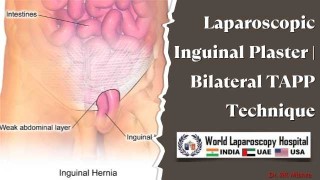Laparoscopic Myomectomy: A minimally invasive approach to remove uterine fibroids
Add to
Share
1,423 views
Report
2 years ago
Description
Laparoscopic Myomectomy is a surgical procedure that uses a minimally invasive approach to remove uterine fibroids, which are non-cancerous growths that develop in the uterus. This procedure is an alternative to traditional open surgery, which involves a larger incision and longer recovery time. During a laparoscopic myomectomy, a surgeon makes a few small incisions in the abdomen and inserts a laparoscope, a thin tube with a camera and light, to view the uterus. The surgeon then uses specialized surgical instruments to remove the fibroids while preserving the uterus. This procedure is often recommended for women who have small to moderate-sized fibroids and want to preserve their uterus for future childbearing. Laparoscopic myomectomy typically has a shorter recovery time, less pain, and fewer complications compared to traditional open surgery. However, not all women are candidates for laparoscopic myomectomy, and the decision to undergo this procedure should be made after consulting with a gynecologist or a specialist in minimally invasive surgery. Overall, Laparoscopic Myomectomy is an effective and safe procedure for treating uterine fibroids while minimizing the impact on a woman's body. In addition to the benefits mentioned above, laparoscopic myomectomy also has a lower risk of infection and bleeding compared to traditional open surgery. It is also associated with a shorter hospital stay, allowing women to return to their normal activities sooner. Laparoscopic myomectomy can be performed under general anesthesia, and the surgery usually takes 1-2 hours, depending on the size and number of fibroids being removed. Most women can return to work within one to two weeks, although the recovery time can vary depending on the individual and the complexity of the surgery. However, there are some potential risks and complications associated with laparoscopic myomectomy, including bleeding, infection, injury to other organs, and the possibility of requiring a larger incision or conversion to an open surgery during the procedure. It is important for women to discuss all of their options for treating uterine fibroids with their healthcare provider and to carefully weigh the risks and benefits of each option. Ultimately, the decision to undergo laparoscopic myomectomy or any other surgical procedure should be based on an individual's specific medical history and personal preferences. Another important consideration for women who are considering laparoscopic myomectomy is the potential impact on future fertility. While this procedure is designed to preserve the uterus and maintain fertility, there is still a risk of scar tissue formation or damage to the reproductive organs during surgery, which can affect fertility. Women who are planning to become pregnant in the future should discuss their options for preserving fertility with their healthcare provider. Depending on their specific situation, they may need to consider alternative treatments or procedures, such as fertility preservation or in vitro fertilization. It is also important for women to follow their doctor's post-operative instructions carefully to ensure a successful recovery. This may include restrictions on physical activity and lifting, as well as regular follow-up appointments to monitor healing and evaluate any potential complications. Overall, laparoscopic myomectomy is a safe and effective option for treating uterine fibroids, especially for women who want to preserve their uterus and future fertility. However, as with any surgical procedure, it is important to carefully consider the risks and benefits and to work closely with a qualified healthcare provider to ensure the best possible outcomes.
Similar Videos






